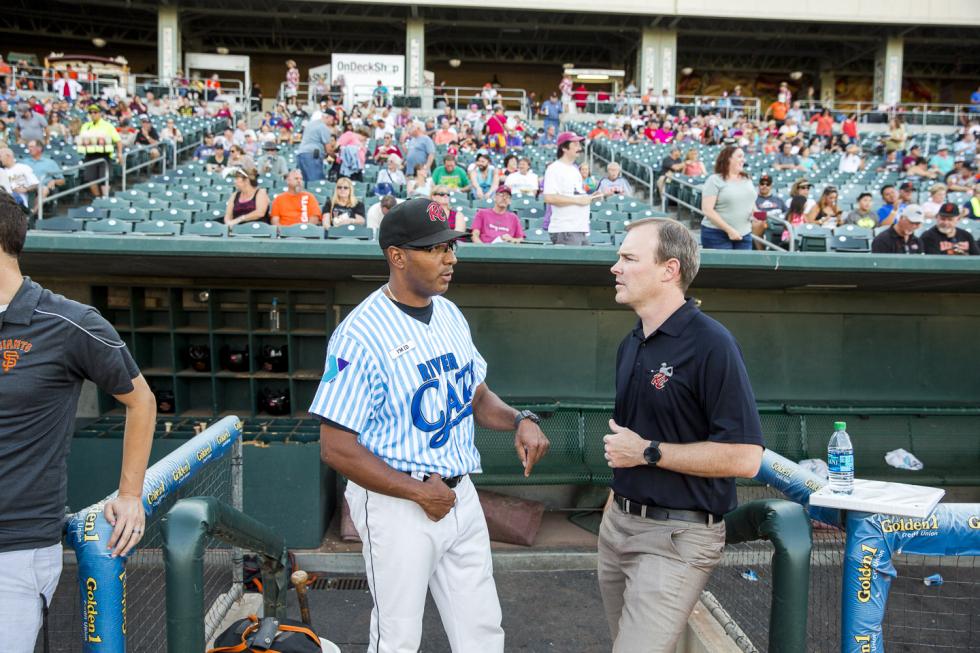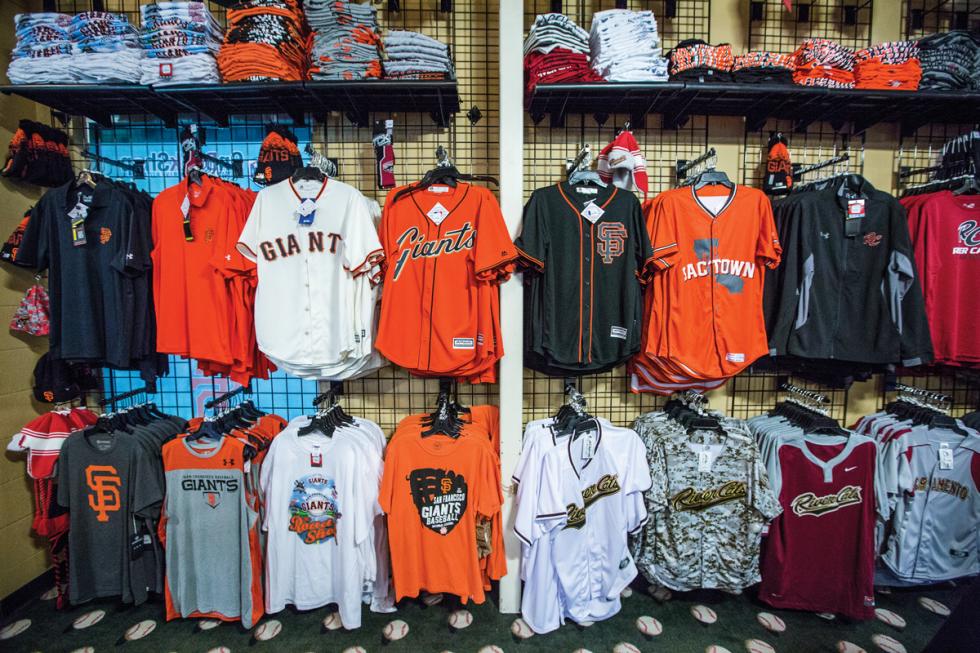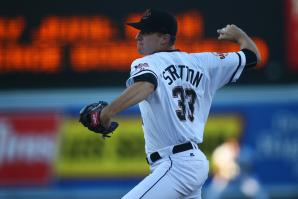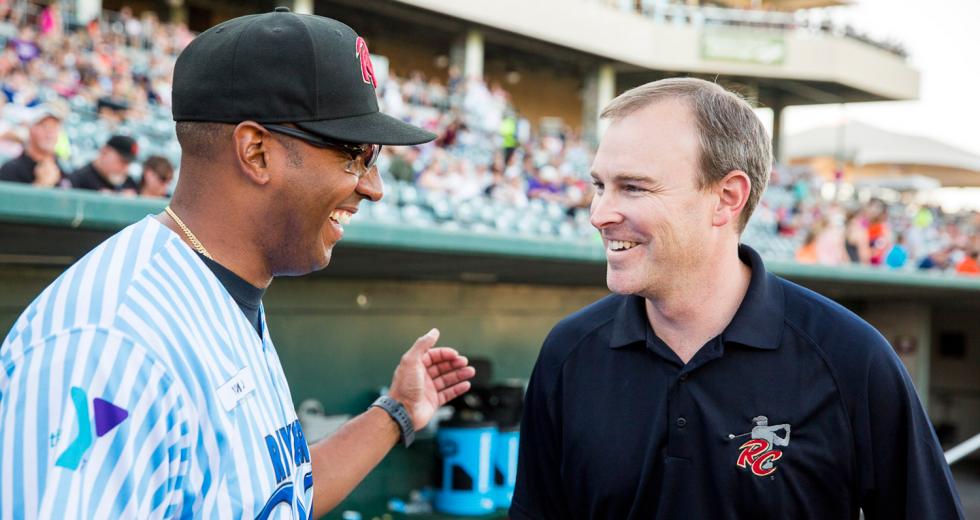In September 2014, the River Cats signed a two-year affiliation agreement with the San Francisco Giants, effectively ending the team’s 15-year partnership with the Oakland Athletics. Less than two years later, the two clubs have inked a new four-year deal, extending the agreement through 2020, marking one of the few times the Giants have signed a four-year agreement with a Triple-A affiliate.
“The whole thing started with a notion of what it might be like to be affiliated with the Giants,” says River Cats President Jeff Savage. “The sheer volume of Giants fans coming to our games was huge, and it definitely did not hurt that the Giants had won the 2010 and 2012 World Series, and were on their way to a third title in 2014.” But before the River Cats could act on any notion, they needed strong evidence that would support a change with the fans, the players, the community and its bottom line.
Signing an affiliation agreement can be a tricky process. Before a minor league team can talk to any of the major league clubs, they must first declare their free agency — all without knowing who else is in the pool. “You’re really operating in the dark,” Savage says. “You aren’t allowed to talk to any of the other teams you aren’t affiliated with.” The process is set up this way to prevent other teams from tampering with the existing affiliation agreements, but it can be tedious and frustrating.
Left to Right Sacramento River Cats Manager Jose Alguacil chats
with President Jeff Savage before the start of the game.

Unknown to the River Cats, the Giants were also considering a change from its 17-year affiliation with the Fresno Grizzlies, a Triple-A team that competes in the Pacific Coast League with the River Cats. “We had an extended stay in Fresno and had worked with multiple organizations from different ownership groups over our 17-year partnership,” says Bobby Evans, the Giants’ senior vice president and general manager. “With the possibility for further turnover, we decided to investigate other options.” In contrast, 2016 marked the 17th season with the Savage family at the River Cats helm. The franchise was originally purchased by majority owner Art Savage in October 1998 and was relocated to Sacramento from Vancouver prior to the 2000 season. When Art passed away in 2009, his wife Susan became CEO and majority owner. Sons Jeff and Brent also work for the organization.
Neither team knew that the other was considering free agency, but both anticipated that they might be available. Referencing anonymous sources, Susan Slusser, the Oakland A’s beat writer for the San Francisco Chronicle, published an article indicating the River Cats were not renewing with the A’s. Both teams saw an opportunity. “We don’t give a lot of credence to rumors, but in this case, the rumors helped us,” Savage says. Plus, the River Cats had historically renewed its affiliation agreement with the Oakland A’s one year early, but in 2013, Savage delayed the conversation, fueling chatter about the two sides parting company.
Related: Baseball Affiliation Basics
Before becoming a free agent, Savage and the River Cats organization did their due diligence to prove a switch to the Giants would be beneficial for both parties. The organization began talking to area television stations and started researching TV ratings on the Giants games. They also came across an informative Facebook study published in the New York Times that broke down which MLB teams got the most “likes” — nationwide, by county. The study further broke down the information by listing the top three teams for each zip code. Southern California is predominantly Dodger blue, with the exception of Orange County and San Diego. Starting in the Central Valley and encompassing all of Northern California, a big chunk of Nevada and much of southern Oregon, the counties are predominately Giants orange. “Many of the counties were well over 50 percent Giants fans compared to 9 or 10 percent A’s fans,” Savage says. “When we looked at the counties in the greater Sacramento area, the numbers were even higher.” The River Cats had their hard evidence.
“We knew some A’s fans would be unhappy with the transition and we definitely heard about it from a select group of them,” Savage says. “But I am so proud of how they responded. The number of A’s fans who were season ticketholders before, support us now just as much as they originally did.” The Triple-A affiliate for Oakland is now in Nashville.
“The sheer volume of Giants fans coming to our games was huge.”Jeff Savage, president,Sacramento River Cats
When the 2014 Minor League Baseball season closed on Sept. 13, the Giants and the River Cats were able to file to become free agents. The next day, the River Cats received an email from Minor League Baseball (MiLB) listing the free agent teams. The Giants were on the list, but the clubs were still not able to speak until Sept. 16. Once the clock struck midnight, the two teams were on the phone. “The first call was an opportunity for both sides to get to know each other,” Evans says. That was followed by an in-person meeting the next day. “We wanted to make sure they understood the breadth and depth of our organization,” Evans says. “It’s important that both teams mesh in personality and style and have a common belief system and value system of how the relationship will grow.”
After the meeting, Savage was sold on making the switch. “I was ready to sign on the dotted line,” he says. But San Francisco wanted more time. “After the meeting, we needed time to digest it and think about it,” Evans says. “We have well-established standards and values, and a reputation of long-tenured relationships. We wanted to be sure.” The Giants took another 48 hours to mull over the affiliation agreement. To Savage, it felt like an eternity. “I didn’t sleep very well on those nights,” he says.
Part of the challenge was that during those two days, most of the other free agents were snapped up. Besides the Giants, the only teams left were the Houston Astros and the Milwaukee Brewers. Every Triple-A team must have a Major League affiliate, as there are the same number of teams in both the minor and major leagues. But if something doesn’t get worked out, MiLB will play matchmaker and pair up the teams themselves. “Our main concern was being paired up with a Major League team that did not have a strong fan base in our region,” Savage says.
But he didn’t need to worry. On Sept. 18, the Giants and the River Cats signed a two-year affiliation agreement. A little more than a month later, the Giants would go on to win the 2014 World Series, beating the Kansas City Royals, 3-2, to win Game 7 and earn their third championship in the last five seasons. The River Cats’ timing could not have been better.
According to Evans, a few factors tipped the Giants in the River Cats favor. The biggest one was the proximity of the two clubs. “The teams are only 90 minutes apart, which is ideal for player call-ups and other player development needs,” he says. Other factors cited include the large fan base in the Sacramento region, good facilities and attendance figures, and more direct flight choices to Sacramento for teams, players and coaches.
When the affiliation shuffle was all over, 2014 was one of the busiest in the last decade with 20 minor league teams changing their big league partners during the two-week open period. A few transactions created a domino effect that year, starting with the purchase of the Oklahoma City Triple-A team by a group of Los Angeles Dodgers owners. That transaction caused the Dodgers to change affiliates from Albuquerque to Oklahoma City, which in turn saw the Colorado Rockies affiliate leave Colorado Springs to fill the open slot in New Mexico. Oakland went to Nashville, San Francisco shifted to Sacramento and Houston moved from Oklahoma City to Fresno to fill the vacant spot left by the Giants. Milwaukee left Nashville and filled the opening in Colorado Springs.
“The River Cats have the top attendance numbers in all of Minor League Baseball and the fans bring a ton of energy and support.” Ty Blach, pitcher, Sacramento River Cats
With the shift, the Triple-A Oakland players and coaches now report to the new A’s affiliate in Nashville, and the Triple-A San Francisco players and coaches moved to the new Giants affiliate in Sacramento. It’s a common practice in the minor leagues for teams to move around. “Most team rosters change dramatically from year to year and everyone is used to it,” Savage says. “Players don’t worry about living in the towns they play in simply because turnover is so high at the minor league level.”
Ty Blach, a 6’2” left-handed pitcher out of Creighton University in Omaha, is an example of the typical migration of minor league players. Blach was selected by the Giants in the fifth round of the 2012 draft and has steadily moved through the franchise’s farm system, starting with the Class A Advanced California League in 2013. In 2014, Blach threw for the Double-A Richmond Flying Squirrels in Virginia and in 2015, joined the Triple-A River Cats in Sacramento. He is currently on the expanded 40-man Giants roster, waiting for his opportunity to be called up. A Colorado native, Blach is used to moving around. “It’s part of the game,” he says. But he’s enjoying his stay in Sacramento. “The River Cats have the top attendance numbers in all of Minor League Baseball and the fans bring a ton of energy and support.”
Within the greater Sacramento area, baseball fans lean
predominantly toward the Giants, making the River Cats an ideal
Triple-A affiliate for the Major League team.

In the first year of the new affiliation agreement, the Giants asked the River Cats to make some facility improvements, including upgrading the home batting cage and increasing the size of the backdrop in center field to eliminate some harsh and distracting glare. “They were very responsive to our needs and were not defensive or trying to fix things on the cheap,” Evans says. “That was important. After the first year, it was clear to us that we wanted to extend our affiliation agreement.”
During this year’s spring training, the two sides began working together to negotiate and sign the contract extension. The new four-year deal was announced at the 2016 exhibition game in May.
For Savage and the River Cats, the impact of its affiliation with the Giants has been even better than expected The organization has seen an uptick in attendance of more than 10 percent, and the added fans, merchandise and concession sales have boosted profits. Recently, the River Cats also topped Forbes’ list of Minor League Baseball’s Most Valuable Teams for the fourth consecutive year, based on attendance figures, operating revenue and income.
“The Sacramento market was really ready to embrace the Giants,” Savage says. “It’s been a great partnership for all of us.”
Recommended For You

What Happened When One River Cat Got the Big Call
Only about 10 percent of all minor league players get a chance to play in the big leagues
Once players make it to Triple-A, the prospect of being called up to the majors is more tangible. Only about 10 percent of all minor league players make it to the big leagues, and the majority are pulled from the more talented and experienced Triple-A teams, which represent the highest level of Minor League Baseball.

How the River Cats Became One of the Greenest Minor League Teams
Efforts toward sustainability cover transportation, food waste and energy use
When River Cats season ticket holder Jared Pane and his family lower their kickstands at the Raley Field stadium bicycle valet, he breathes a little easier. He knows their fanatic support of the West Sacramento minor-league team is not only a fun tradition, but also good for the environment.





Comments
Having attended games under both Major League franchises, I have to mention that while under the Giants, the Rivercats seem to not have the home run hitters or exciting ball players that they did while under the As. This may be because one team prefers lateral trades among other teams for their development, while the other grows their talent organically.
The Giants grow plenty of players organically: Bumgarner, Posey, Belt, Crawford, Panik, Romo, Law, Osich, Okert, Williamson, Parker, Adrianza, Tomlinson, Brown, plus Duffy was the starting 3B last season, and Sandoval the years before, and local native son Susac was on the team for a couple of years as well. Not many teams could boast of an organically grown infield like the Giants did when they had Duffy at third, and when Arroyo takes 3B, it'll be homegrown again.